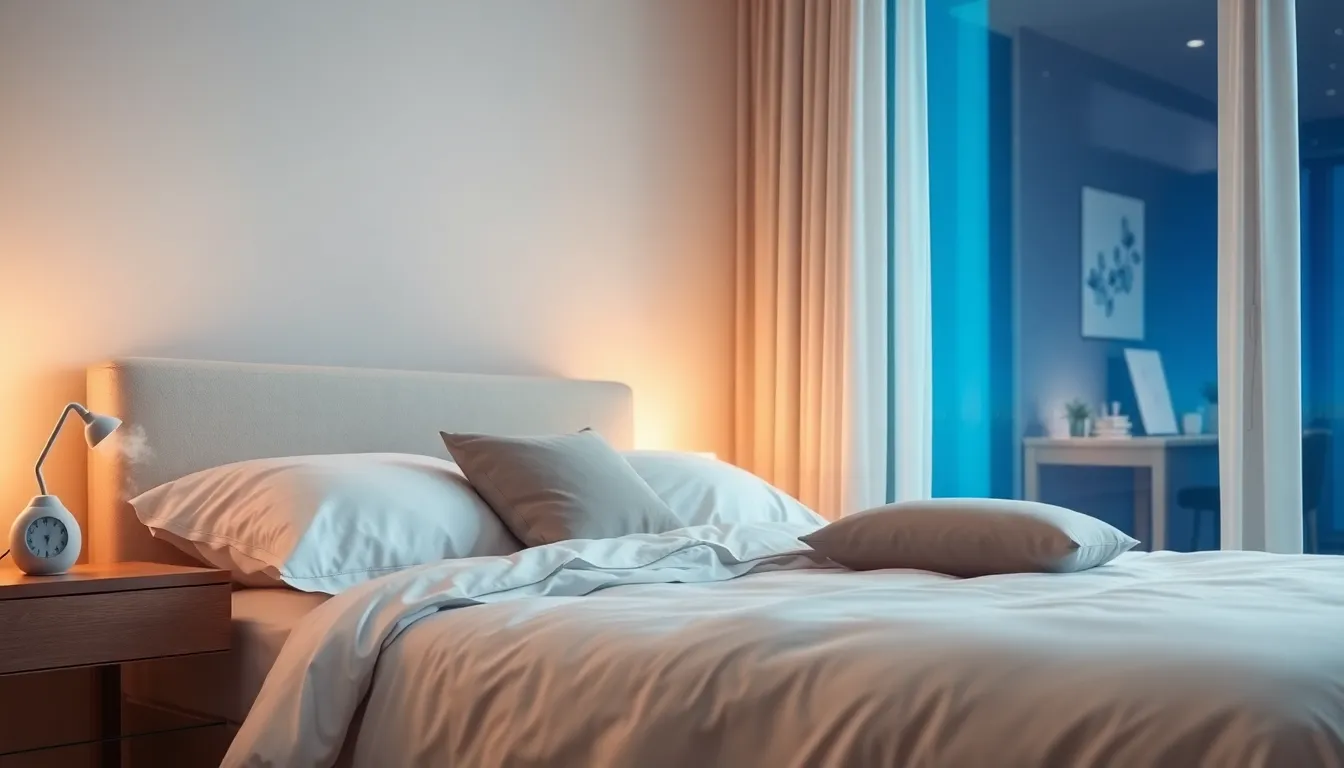Picture this: it’s a quiet night, and you’re faced with the ultimate challenge, helping someone find their way to the Land of Nod. It’s not as easy as flipping a switch, is it? Whether it’s a restless partner, a wide-eyed child, or a friend who’s had one too many espressos, putting someone to sleep can be as tricky as solving a Rubik’s cube blindfolded. But fear not. This guide walks you through the science, the common culprits of sleeplessness, and effective techniques to ensure they drift off peacefully, dreaming sweet dreams instead of counting sheep. So, grab your cozy blanket and let’s immerse.
Table of Contents
ToggleUnderstanding Sleep Physiology

Sleep is a complex process vital for overall well-being. The human body operates on a biological clock known as the circadian rhythm, which governs sleep-wake cycles. This rhythm influences hormone production, metabolism, and body temperature. To comprehend how to help sleep, it’s essential to grasp this underlying physiology.
Stages of sleep include REM (Rapid Eye Movement) and NREM (Non-Rapid Eye Movement) phases. During REM sleep, the brain is highly active, and dreams occur while muscle activity is suppressed. NREM sleep, on the other hand, consists of several stages that range from light to deep sleep.
Understanding these stages can help tailor your approach to promoting better sleep.
Common Reasons for Sleep Difficulties
Various factors can impede a good night’s slumber. Stress is often a leading cause. Whether it’s work, relationships, or financial worries, anxiety can keep thoughts racing far into the night.
Physical discomfort also plays a role. An unyielding mattress, excessive noise, or even room temperature can disrupt relaxation. Also, medical conditions like insomnia, sleep apnea, or restless leg syndrome significantly impact sleep quality.
The consumption of certain substances should not be ignored either. Caffeine and nicotine stimulate the nervous system, making it hard to wind down. Understanding these barriers enables informed strategies to help someone finally catch those elusive Zs.
Techniques to Promote Sleep
Finding the right techniques to promote sleep can make all the difference. Here are some tried-and-true methods:
Creating a Calming Environment
A peaceful atmosphere sets the stage for sound sleep. Start by dimming the lights to signal the body’s natural wind-down time. Decluttering the bedroom can help reduce anxiety. Consider incorporating soothing scents, like lavender, through candles or essential oils, which are known for their relaxing properties.
Noise control is also crucial: a white noise machine or soft music can block disruptive sounds and create a harmonious sleeping space.
Using Relaxation Techniques
Incorporating relaxation methods into the nighttime routine can reduce anxiety. Deep breathing exercises are effective. Encourage them to inhale deeply through the nose, hold for a moment, and then exhale slowly. Progressive muscle relaxation, tensing and relaxing different muscle groups, can also work wonders.
Another delightful approach is guided imagery, where they visualize a serene scene, thinking of every detail from the sights to the sounds.
Incorporating Sleep Aids
If natural techniques don’t suffice, consider sleep aids. Herbal teas like chamomile or valerian root can promote relaxation. Gummies or tinctures with melatonin, a hormone that regulates sleep cycles, offer additional support. But, it’s wise to consult a healthcare professional before combining any sleep aids.
The Role of Routine in Sleep Hygiene
Establishing a fixed sleep routine can revolutionize one’s ability to fall asleep. Consistent sleep schedules reinforce the body’s circadian rhythm. Going to bed and waking at the same time each day, even on weekends, can enhance sleep quality.
Incorporating winding-down rituals signals the brain it’s time to rest. Activities could include reading a book, practicing gentle yoga, or engaging in meditation. Avoiding screens at least an hour before bedtime is paramount, as blue light from devices can interfere with melatonin production.
Encouraging a consistent routine not only enhances the overall quality of sleep but also helps in quickly establishing a rhythm conducive to relaxation.
Monitoring and Adjusting Sleep Practices
Encouraging patience and perceptiveness is crucial in adjusting sleep practices. Sometimes what works wonderfully for one person may not yield the same results for another. It’s vital to track changes in sleep patterns over a few weeks.
Using a sleep journal helps in pinpointing effective strategies. Noting the time they fell asleep, how restfully they slept, and what techniques they employed can provide insights. Besides, adjustments can involve re-evaluating their environment or altering pre-bedtime rituals.
Encouraging open conversations about their sleep can also ease anxieties, making it easier to ask for help when needed.




